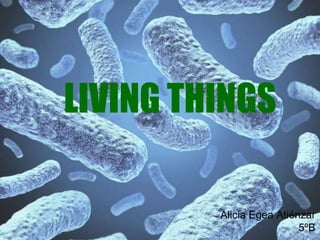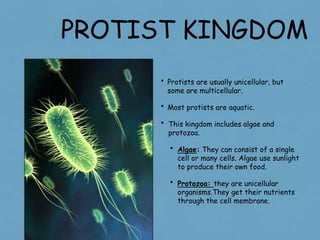Embed presentation
Download to read offline








This document classifies and describes the five kingdoms of living things: Animal, Plant, Fungus, Protist, and Monera. It explains that animals are multicellular and get energy by consuming other organisms, plants use photosynthesis to produce their own food but cannot move, fungi feed on dead organisms, protists include algae and protozoa with some multicellular and most aquatic, and monera consists of microscopic unicellular bacteria found everywhere.







